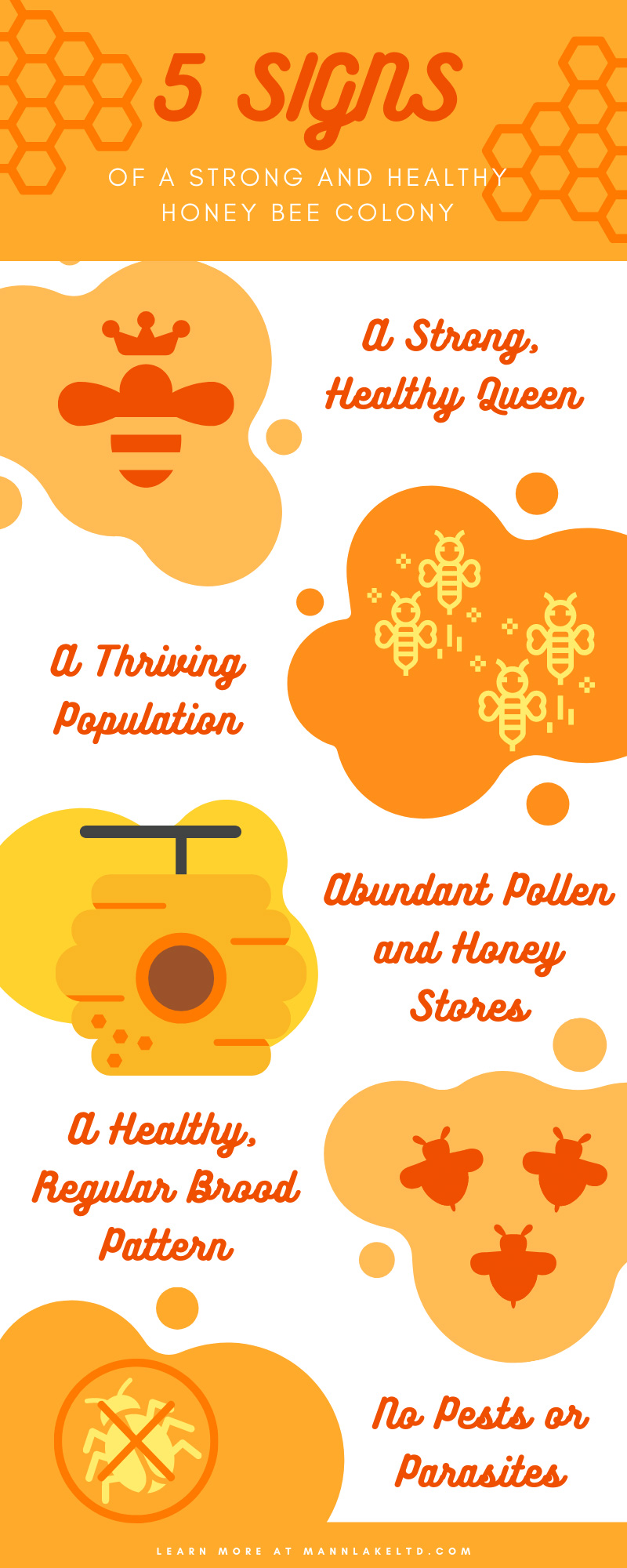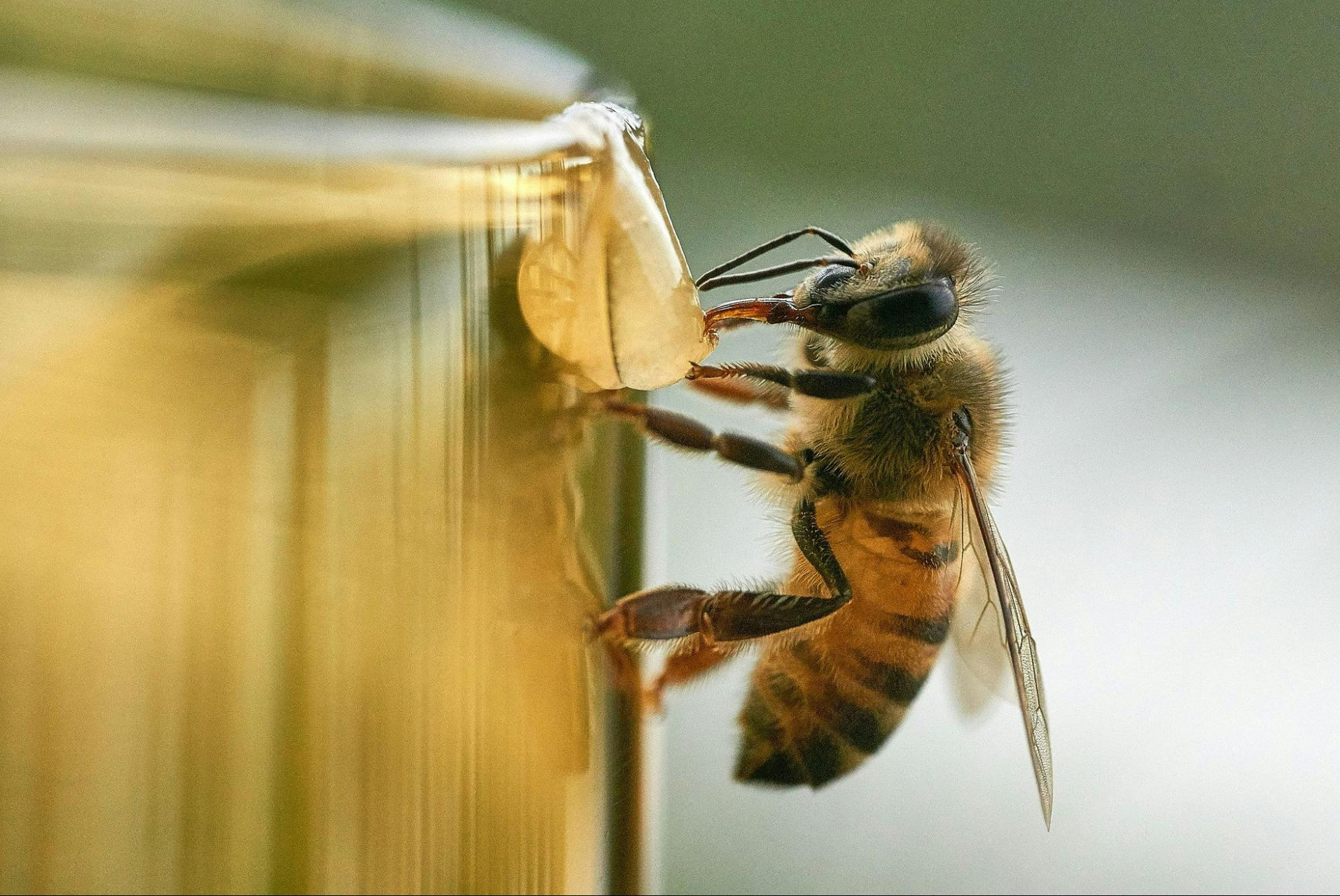5 Signs of a Strong and Healthy Honey Bee Colony
When your honey bee colony is strong and healthy, it has a much better chance of surviving pest infestations, diseases, or an upcoming harsh winter. This is why beekeepers hope to see all the signs of a healthy colony every time they visit their hives.
When you take apart and inspect your hives, what do you see? Every beekeeper hopes for a strong population, a healthy brood pattern, and abundant honey and pollen for the honey bees to feast on. These and many other signs indicate a thriving hive.
If you notice a lack of these characteristics in your hives, it might be time to take a closer look and address the problem with pest treatments, pollen substitutes, or other solutions.
When you know the signs of a strong and healthy honey bee colony, you can quickly identify a weaker hive and take action to set it right proactively. Keep your honey bees in good health by looking out for these things during every hive inspection.
1. A Strong, Healthy Queen
Much of a beehive’s activity revolves around a healthy queen. The queen bee reproduces and keeps the population up, creating healthy bees and a productive hive. Queen bees release pheromones that let the rest of the honey bees know she’s alive and well. This motivates the bees to keep making honey, raising brood, and protecting the hive.
That’s why you should always keep an eye out for the queen whenever you take a peek inside your hive. Keeping tabs on the queen makes it easier to quickly spot and address “queenlessness,” which can be dangerous for hives.
If you lose a queen because of old age or other unfortunate circumstances, you might end up with laying workers, creating an unbalanced population where the hive does not have enough worker bees.
Be sure to mark your queen with a dot of ink or paint to make her easier to spot during inspections. If you realize your hive is without a queen, act quickly to replace her and get your population back on track. Failing to do so can be detrimental to the health of your bees and the hives in general.
As you know, a significant part of beekeeping is simply keeping an eye on the bees, particularly the queen, to ensure your apiary is in good health throughout the seasons.
| Requeening Tip: A queen bee's lifespan can reach 5 years, but replacing her every two to three years keeps the hive strong. |
2. A Thriving Population

As important as the queen bee is for hives, a healthy hive relies on thousands of healthy worker bees. Without the hard work of a thriving population, a colony would have no foragers to gather pollen and nectar.
They would also be missing the nurse bees, who care for the brood and guard bees, who keep pests and parasites away. Every bee has its own important role within the hive, and as beekeepers, it’s important to know these roles to ensure your colony is in good health.
Your honey bees also need a strong population to cluster together and keep the queen and the rest of the hive warm through the winter. It’s always a good idea to monitor your hive’s population to ensure enough bees play every role throughout the seasons.
Pay attention to the traffic coming in and out of your hive entrances when checking on your bees, and note any shortages you notice. If you do notice a drop in population, check back more often to keep an eye on your colony.
You should also keep population in mind as you open up the lid of your hive. A colony with a good population will likely have honey bees packed between frames or hanging out on top during your beekeeping duties. Strong populations will also have plenty of nurse bees moving around over the brood combs.
3. Abundant Pollen and Honey Stores
Honey bees use both pollen and honey to feed themselves. Something is wrong if your hive doesn’t have a good supply of pollen or honey. Look for pollen stores in your hive, usually near the brood cells. You can also watch the forager bees return to the hive with the pollen baskets on their legs stuffed with pollen.
Healthy bees need enough food to complete all their tasks and keep the queen in good health. You also want to check the honey stores when you inspect your hive. A plentiful honey supply means your colony is still healthy and productive. This also indicates they’ll have enough food to make it through the winter—and allow you to collect some sweet, golden honey for yourself.
However, abundant pollen and honey stores alone don’t guarantee healthy bees or hives. If a colony was once strong but has recently taken a hit to its population, it might still have plenty of honey in the hive. This isn’t always indicative of healthy bees.
Unfortunately, this doesn’t mean the honey bees can maintain themselves alone. When monitoring your hive’s food stores, make sure you take the other signs of strong and healthy honey bee colonies into consideration as well. It’s the beekeepers’ job to monitor both the population and the honey stores to determine the hive’s health overall.
If your hive needs some strengthening, some simple fixes may get the job done with no problem. You can add feed protein to the bees’ sugar water for a boost.
| Feed Boost: Add protein supplements to your bees’ diet to strengthen the hive, especially when natural food sources are scarce. |
4. A Healthy, Regular Brood Pattern
A productive queen and plenty of worker bees maintain a hive, but a healthy brood pattern ensures the colony’s future. As you perform hive inspections, make sure you take a good long look at the brood cells. If your queen bee is doing her job right, each cell should have a single egg in it.
The hive will also have a regular brood pattern, meaning that the comb will have a solid grouping of capped brood cells. This indicates that there is a large number of healthy broods who are about the same age.
If there are holes or uncapped cells in this pattern, it means that workers or nurse bees have removed unhealthy larvae. If this happens, you should look for other issues in the hive, such as pests or diseases that might harm the brood’s health.
You can also look at the larvae themselves to judge the health of your brood. Healthy larvae will have a pearly white color and sit curled up in their cells. If you notice discolored, twisted, or otherwise malformed larvae, it’s usually an indicator that your brood is suffering from some sort of disease or parasite, which can impact the health of the entire hive.
5. No Pests or Parasites

It’s always a good sign when your hives are free of Varroa mites, wax moths, and hive beetles. During hive inspections, look for any symptoms of these and other pests, parasites, or diseases that may enter your hive. If you see webbing from wax moths, mites, and beetles crawling around, it’s time to take action.
Protecting your colony with medications and treatment options that will rid the hive of any parasites or diseases is important. Do your research and ask around in the beekeeping community to ensure you are handling your hive correctly, particularly if you haven’t experienced parasites or other pests before.
Remember that some pests, like moths or beetles, are simply an unfortunate reality of owning a beehive. For the most part, the bees will deal with these critters on their own, and beekeepers don’t need to intervene.
If your colony is strong, they can keep these pests at bay without too much issue. However, if your guard bees can’t keep pests to the perimeter of the hive, they might take over and start destroying the hive’s resources and population. One good indicator of your hive’s health is the comb.
A clean, well-maintained comb means your honey bees are the only ones using it. Look out for destroyed comb and other symptoms of common beehive pests. Like with most honey bee threats, addressing the problem quickly makes it much easier to get your colony back on track and restore health and productivity within the hive.
This is another reason why it’s so important for beekeepers to be proactive with their hives and do regular inspections. While everything may appear fine one day, things can change quickly within the hive if pests or parasites are present. The quicker the beekeeper can step in, the better.
| Pest Management: Incorporate non-chemical methods such as drone comb removal and screened bottom boards to manage pest populations. These practices reduce reliance on medications and support a healthier hive environment. |
The Final Buzz on Healthy Bees
Healthy bees are the top priority for beekeepers, no matter what the season or how experienced you are. Beekeeping comes with its own set of challenges, but maintaining the health of your colony is your number one job.
Check out our list of tips for hive inspections, pay attention to the behavior and population of your bees, and stay alert for pests in the hive. The bees’ happiness and health depend on you!


